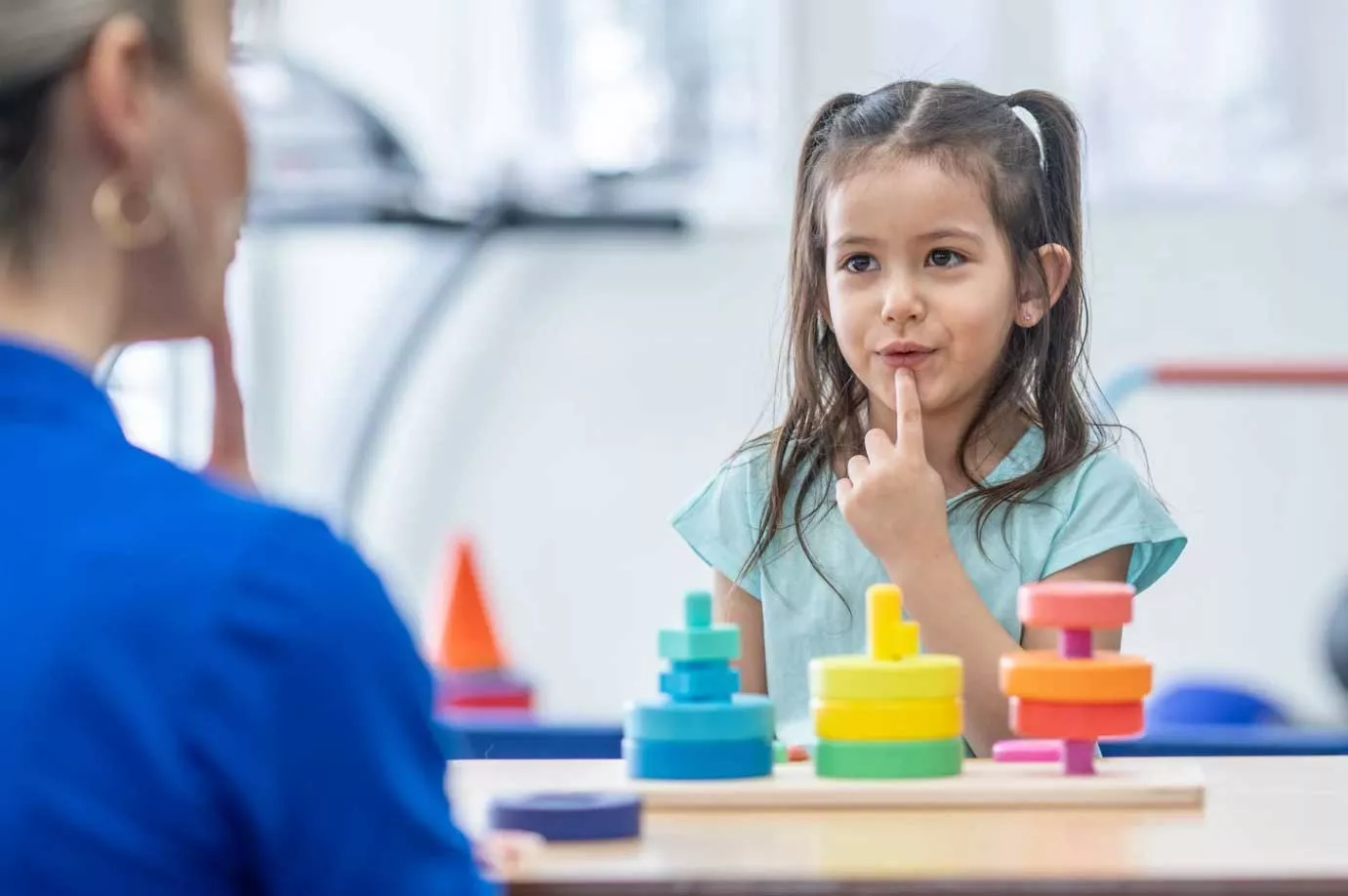
Applied Behavior Analysis (ABA) therapy plays a pivotal role in helping children with autism enhance essential skills and improve their overall quality of life. This evidence‐based approach targets communication, social behavior, daily living, and academic skills through structured teaching and positive reinforcement. Mestre Behavior, a leading provider in South Florida, employs ABA therapy to foster improvements in language, attention, self‐care, and social interaction in a nurturing setting. Parents report increased confidence in their children’s abilities and noticeable decreases in challenging behaviors following systematic intervention. By integrating strategies such as discrete trial teaching, natural environment training, and positive reinforcement, ABA helps children develop adaptive behaviors while reducing maladaptive responses. Its programs, designed to address deficits like nonverbal communication, motor skills, and coping, lay the foundation for lasting progress in home, school, and community environments. This article explores ABA therapy’s impact on communication, social skills, behavior management, daily living, academic readiness, and family empowerment.
Transitioning to the core sections, the article will detail how ABA techniques improve communication skills, foster social development, manage challenging behaviors, build self-care routines, enhance learning readiness, and empower families for lasting skill generalization.
Advancing Communication Skills Through ABA Therapy for Children
Developing robust communication skills is essential for children with autism. ABA therapy offers targeted strategies to improve both verbal and nonverbal abilities. Techniques such as the picture exchange communication system (PECS) and discrete trial training (DTT) guide children in articulating words, forming sentences, and understanding language cues. Direct instruction combined with natural environment teaching enhances cognitive and verbal fluency and has shown improvements—studies report a 35% increase in language comprehension within six months.
Developing Verbal Expression and Language Comprehension
ABA methods like mand training and echoic training use prompts and reinforcement to stimulate verbal expression. Consistent reinforcement encourages spontaneous speech and increases word usage, while structured routines nurture regular practice and language acquisition.
Improving Nonverbal Communication Cues
In addition to spoken language, ABA therapy focuses on nonverbal cues. Techniques such as video modeling and role-playing help children recognize facial expressions, body language, and eye contact. Immediate feedback during sessions aids in linking nonverbal signals with emotions, reducing communication barriers effectively.
Building Conversational Abilities
ABA also teaches the back-and-forth of conversation using scripting, social stories, and reinforcement to help children initiate, maintain, and conclude discussions. Structured peer interactions further extend these conversational skills into real-life settings, allowing children to engage meaningfully with family and peers.
Using Augmentative and Alternative Communication (AAC) Effectively
For some children, AAC devices like tablets and picture-based systems are essential. ABA therapy integrates these tools into learning sessions to help children express preferences, needs, and emotions. This approach reduces frustration and enhances overall communication efficiency.
How ABA Techniques Foster Language Growth in Children
Overall, ABA techniques—positive reinforcement, prompting, and error correction—break complex language tasks into manageable steps. This creates a supportive scaffold encouraging gradual improvement in language usage and comprehension, enabling children to progress toward independent communication.
Fostering Social Development With Applied Behavior Analysis
Social development is critical to a child’s overall well-being. ABA therapy offers a structured framework to enhance interpersonal skills, facilitate peer interaction, and encourage cooperative play—key elements for building friendships and community inclusion.
Cultivating Peer Interaction and Play Skills
ABA therapy emphasizes structured peer interactions where children learn reciprocity and turn-taking through guided group sessions. Activities like role-playing and cooperative tasks expose children to positive social feedback, increasing both the frequency and quality of their interactions.
Understanding Social Norms and Cues
Techniques such as social narratives and video modeling help children learn appropriate behaviors and social cues, such as personal space, greetings, and acceptable topics. As a result, children become more adept at navigating different social settings with increased acceptance and fewer incidents of isolation.
Promoting Cooperative Behaviors and Sharing
Interventions like token economies and peer reinforcement promote sharing and cooperative play. Structured sessions enable children to practice these behaviors repeatedly, reducing conflicts and building a strong foundation for long-term social relationships.
Reducing Social Anxiety and Isolation
ABA therapy uses gradual exposure and systematic desensitization to ease social anxiety. By controlling the social environment and supporting children through incremental challenges, therapy helps build confidence and encourages more open engagement with peers.
The Advantages of ABA Therapy for Children in Social Settings
The advantages of ABA are evident in improved social skills, fewer behavioral outbursts, and better integration into group activities. Enhanced communication and interaction skills lead to more meaningful relationships and increased social confidence.
Managing Challenging Behaviors With Positive ABA Strategies
A cornerstone of ABA therapy is managing challenging behaviors like tantrums, aggression, and self-stimulatory actions. The primary goal is to replace such behaviors with functional alternatives by understanding their underlying causes.
Identifying Functions of Behavior
Functional behavior assessments (FBA) are used to identify the antecedents, behaviors, and consequences (the ABCs) that drive problematic behaviors. For example, tantrums may be a way to escape tasks or gain attention. Once the function is determined, interventions are personalized to address these root causes, significantly reducing the behavior.
Teaching Replacement Behaviors and Coping Mechanisms
After identifying a behavior’s function, ABA therapists teach alternative, socially acceptable responses. Techniques such as DTT and natural environment teaching illustrate how a child might request a break instead of showing aggression, leading to measurable reductions in challenging behaviors.
Decreasing Instances of Tantrums and Aggression
ABA strategies like behavior chaining, role-playing, and self-monitoring help children break complex tasks into simpler steps, promoting emotional self-regulation. This approach not only reduces tantrums but also bolsters overall emotional management, aiding both social and academic performance.
Addressing Self-Stimulatory Behaviors Appropriately
Behaviors like hand-flapping or repetitive vocalizations, which can disrupt learning, are also addressed by teaching functional replacements that meet sensory needs. Gradual fading of reinforcement ensures that children adopt more appropriate behaviors, resulting in significant decreases in such actions.
Positive Outcomes of ABA Therapy for Children’s Conduct
Parents and teachers note improvements in behavior, with fewer disruptions and enhanced capacity to cope with everyday challenges. Well-managed behaviors contribute to better life satisfaction and long-term success across educational and social domains.
Cultivating Daily Living and Self-Care Abilities
Independence in daily living is a vital goal of ABA therapy. Breaking routines into manageable tasks, ABA helps children master personal hygiene, dressing, feeding, and safety routines, leading to improved life satisfaction and reduced dependency.
Mastering Personal Hygiene Routines
ABA therapists use visual supports and structured sequences to teach tasks like hand washing, tooth brushing, and bathing. Through step-by-step prompts and social stories, children learn to complete these tasks independently, which contributes to overall health and social acceptance.
Acquiring Dressing and Grooming Independence
Dressing and grooming skills are broken into discrete steps—from choosing clothes to putting them on correctly. With errorless learning and immediate reinforcement, children gradually move from needing help to performing these tasks with confidence.
Developing Feeding Skills and Healthy Eating Habits
Feeding skills are addressed through task analysis and choice-making techniques. Visual food charts or token economies encourage children to try a variety of healthy foods. Consistent reinforcement helps broaden their dietary preferences and improves nutritional status.
Promoting Safety Awareness in Daily Activities
ABA integrates safety skills into daily routines by teaching children how to recognize and react to environmental hazards. Through role-playing and repeated practice, children learn essential safety behaviors, such as looking both ways before crossing the street, which promotes secure navigation of their environment.
ABA Interventions Supporting Children’s Self-Sufficiency
By fostering daily skills and self-care, ABA therapy builds lasting independence. Families observe transformative changes as children manage personal routines with less supervision, reducing caregiver stress and promoting a more positive outlook.
Enhancing Learning Readiness and Academic Potential
Academic readiness is essential for future success, and ABA therapy plays an important role in preparing children for school. Techniques to improve attention, focus, and foundational skills directly impact classroom performance.
Improving Attention Span and Focus in Children
ABA utilizes discrete trial training, positive reinforcement, and structured task variation to help children reduce distractions and stay engaged. These strategies have been shown to extend a child’s attention span significantly, which is critical for academic success.
Strengthening Foundational Academic Skills
Through systematic ABA interventions, foundational skills in arithmetic, reading, and writing are developed. Break-down assignments and continuous feedback support early literacy and numeracy, leading to higher performance on academic assessments.
Following Instructions and Classroom Routines
ABA strategies such as role-playing and task analysis help children learn to follow instructions and adhere to routines. This repeated practice results in smoother transitions and a better classroom environment overall.
Increasing Motivation for Learning Through ABA
Targeted reinforcement methods, including token systems and praise, boost both intrinsic and extrinsic motivation. As children achieve goals and receive immediate positive feedback, their willingness to engage and persist in learning increases.
Academic Advantages for Children Receiving ABA Therapy
The cumulative effect of improved attention, foundational skills, and increased motivation is reflected in enhanced academic performance. Children approach learning with increased confidence and improved problem-solving skills.
| Academic Area | Intervention Strategy | Improvement Rate (%) | Measurable Outcome | Research Source |
|---|---|---|---|---|
| Attention Span | Discrete Trial Training, Reinforcement | 50 | Longer sustained engagement in tasks | Educational Psychology Journal |
| Reading & Writing | Task Breakdown, Feedback Systems | 35 | Improved literacy skills | Journal of Autism Studies |
| Mathematics | Structured Instruction, Role-Playing | 30 | Enhanced numerical comprehension | Behavioral Intervention Review |
| Following Instructions | Visual Supports, Error Correction | 40 | Better adherence to classroom routines | Applied Behavior Analysis Reports |
| Motivation | Token Economies, Immediate Praise | 45 | Increased student engagement | Child Development Research |
This concise data underscores ABA therapy’s effectiveness not only in behavioral modifications but also in enhancing academic preparedness and confidence.
Empowering Families and Promoting Skill Generalization
Beyond benefiting children directly, ABA therapy empowers families and promotes skill generalization across various settings. Active family involvement helps ensure that lessons from therapy are applied in everyday life.
Training Parents to Implement ABA Principles
Parent training sessions equip caregivers with the strategies of discrete trial training and natural environment teaching, allowing them to reinforce skills at home. Consistent application of these techniques at home has been shown to improve children’s behavior and foster parental empowerment.
Ensuring Skills Transfer Across Different Environments
ABA therapy uses systematic generalization strategies to ensure that skills acquired in therapy transfer to home, school, and community settings. Techniques such as programming common stimuli and varying control conditions help maintain these skills regardless of the setting.
Building a Supportive Network for the Child
Collaboration between educators, therapists, and community members creates a strong support network that reinforces skills across different environments. This coordinated approach ensures that the child receives consistent feedback, promoting overall social and academic development.
Long-Term Positive Impacts of Early ABA Intervention for Children
Early ABA intervention is linked to long-lasting improvements in adaptive behavior, academic readiness, and social integration as children mature. Continued progress in skills such as self-care and communication contributes to a higher quality of life.
ABA Therapy’s Role in Comprehensive Child Development
Ultimately, ABA therapy is a cornerstone of a holistic approach to child development. Its focus on positive reinforcement, skill generalization, and data-driven adjustments leads to improved behavior, academic success, and social engagement that benefit both the child and family over time.
Final Thoughts
Mestre Behavior’s ABA therapy offers substantial benefits for children with autism by addressing challenges in communication, social skills, behavior, self-care, and academics. Through structured, evidence-based interventions, children develop the independent skills needed for long-term success. With coordinated efforts between therapists, parents, and educators, learned skills are generalized across settings—ensuring lasting, positive improvements in quality of life. As advances in behavioral science continue, ABA therapy remains an essential, transformative tool.
Frequently Asked Questions
Q: How does ABA therapy specifically improve communication skills in children? A: ABA therapy employs methods such as discrete trial training, the picture exchange communication system, and positive reinforcement to help children express their needs verbally and understand nonverbal cues, thereby enhancing both expressive and receptive language abilities.
Q: What makes ABA therapy effective for managing challenging behaviors? A: By using a functional behavior assessment to identify the causes of challenging behaviors, ABA therapy implements reinforcement and replacement strategies to reduce these behaviors and promote more appropriate alternatives.
Q: Can ABA therapy help improve a child’s academic performance? A: Yes, ABA therapy enhances academic achievement by improving attention spans, building foundational skills, and teaching the ability to follow instructions, which prepares children effectively for classroom demands.
Q: How do parents benefit from training in ABA therapy techniques? A: Parent training in ABA provides caregivers with functional strategies to reinforce skills at home, ensuring consistency across environments and empowering parents to manage behaviors more confidently.
Q: What steps are taken in ABA therapy to ensure skills generalize to everyday settings? A: ABA therapy incorporates multiple settings and varying stimuli, and involves different people in the learning process to ensure that skills acquired during therapy are successfully applied in real-life situations.
Q: Is ABA therapy beneficial for all children with autism regardless of severity? A: ABA therapy is highly individualized and can be tailored to each child’s needs—whether their challenges are mild or severe—supporting progress in communication, social skills, and adaptive behaviors across a wide spectrum.
Q: How soon can parents expect to see improvements in their child after starting ABA therapy? A: While results vary, many parents notice improvements in attention and communication within a few months; significant behavioral and skill advancements are typically observed after 6 to 12 months of consistent therapy.




